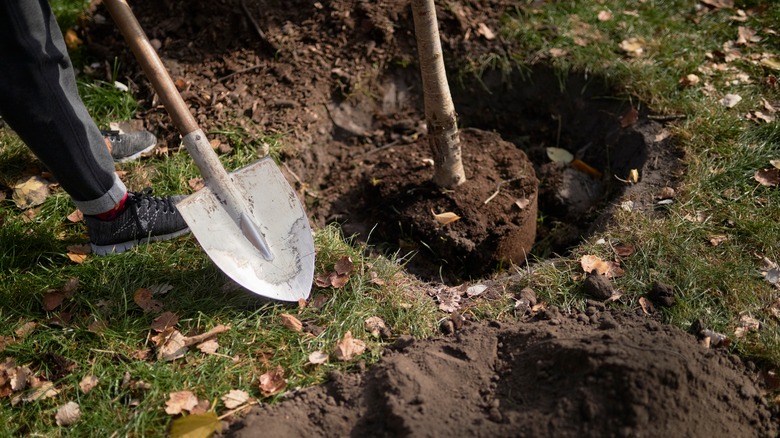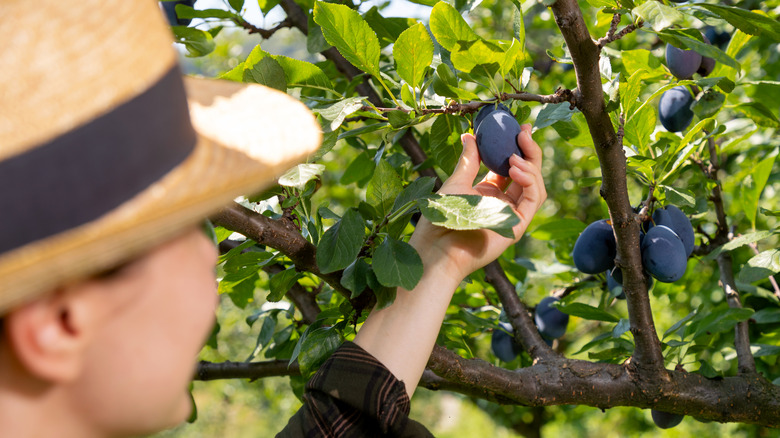The Easy-To-Grow Fruit Tree That Can Thrive In Your Small Yard
The idea of having a fruit tree in your backyard is appealing for several reasons. Not only can these trees add some character to your outdoor spaces, but you might also be able to pick fruit from your own yard during certain times of the year, too. The downside is that many types of fruit trees are large and need additional trees close to them for pollination purposes, which can certainly take up a lot of space. Dwarf fruit trees can be good choices for a smaller yard, but they can also sometimes feel limiting if you want a slightly bigger tree. Instead, the possibility of planting a smaller damson plum (Prunus insititia) tree might be worth exploring, particularly if you have a smaller backyard.
If you've ever wanted to learn how to grow a plum tree in your yard, damson plum can be a reliable choice. As a type of European plum, damson plum is known for its oval-shaped, bluish-purple fruits that are astringent tasting and good for making homemade jams. While the damson plum makes a great stand-alone tree in a yard or garden, it is also sometimes planted in groups as small fruit-producing hedges, too. Damson plum flowers can even attract butterflies and birds to your yard, but be aware that the foliage, stems, and seeds can be toxic for cats, dogs, and horses. Overall, the tree can provide a lot of benefits to any yard without the risk of growing too large if you are short on space. When planted in the right spot, damson plum also thrives with little maintenance, making it the ideal fruit tree for busy households.
Why damson plums may be suitable for smaller yards
Each damson plum tree can grow a lot of fruit at once, which can make it a productive choice for a smaller yard. The tree has an average height and spread of 12 to 15 feet, although some cultivars may reach 20 feet. While this is relatively small for a fruit tree, you'll want to keep these dimensions in mind before planting one. Dwarf varieties may be planted in large containers, too. Also, while a damson plum doesn't technically require another tree next to it in order to bear fruit, keep in mind that self-fertile trees of this kind may not produce as good a quality of fruit. If you have a little more space, you might consider putting two cultivars next to each other to solve this problem.
Before buying a damson plum, it's important to know that the tree does best in USDA hardiness zones 5 to 7. The tree requires at least six hours of direct sunlight per day, so you will want to pick the ideal spot in your yard accordingly. Damson plum also prefers well-draining soil of medium moisture. If these minimal conditions are met, you can expect the tree to start thriving with few problems. Just keep in mind that it may take a few years for the tree to start producing fruit. Before this time, damson plum may not need much pruning, and even fruit-bearing trees only need moderate pruning to help ensure future productivity. Overall, the damson plum is suitable for smaller yards, and it's also one of the types of fruit trees that even a beginning gardener can grow.

